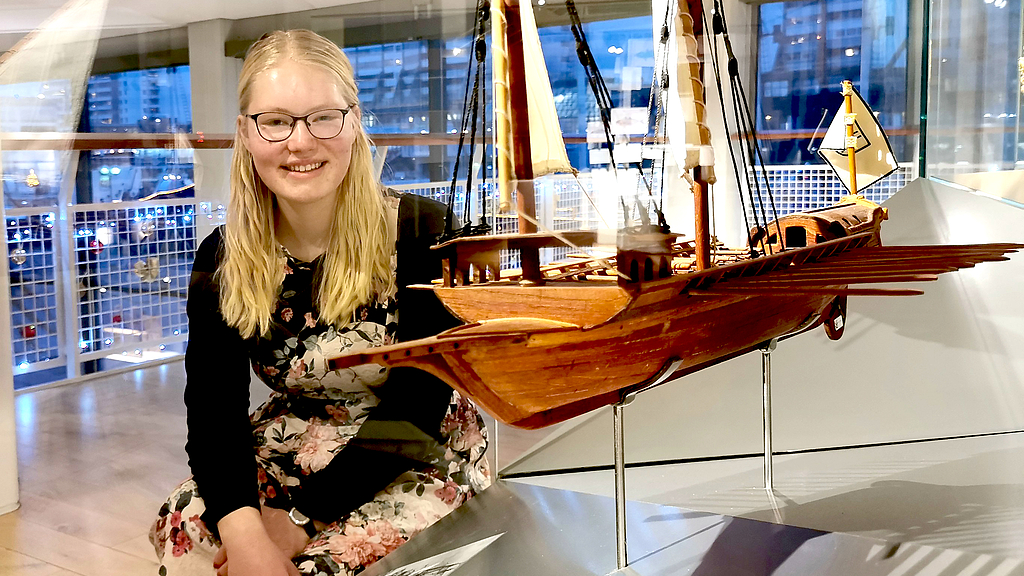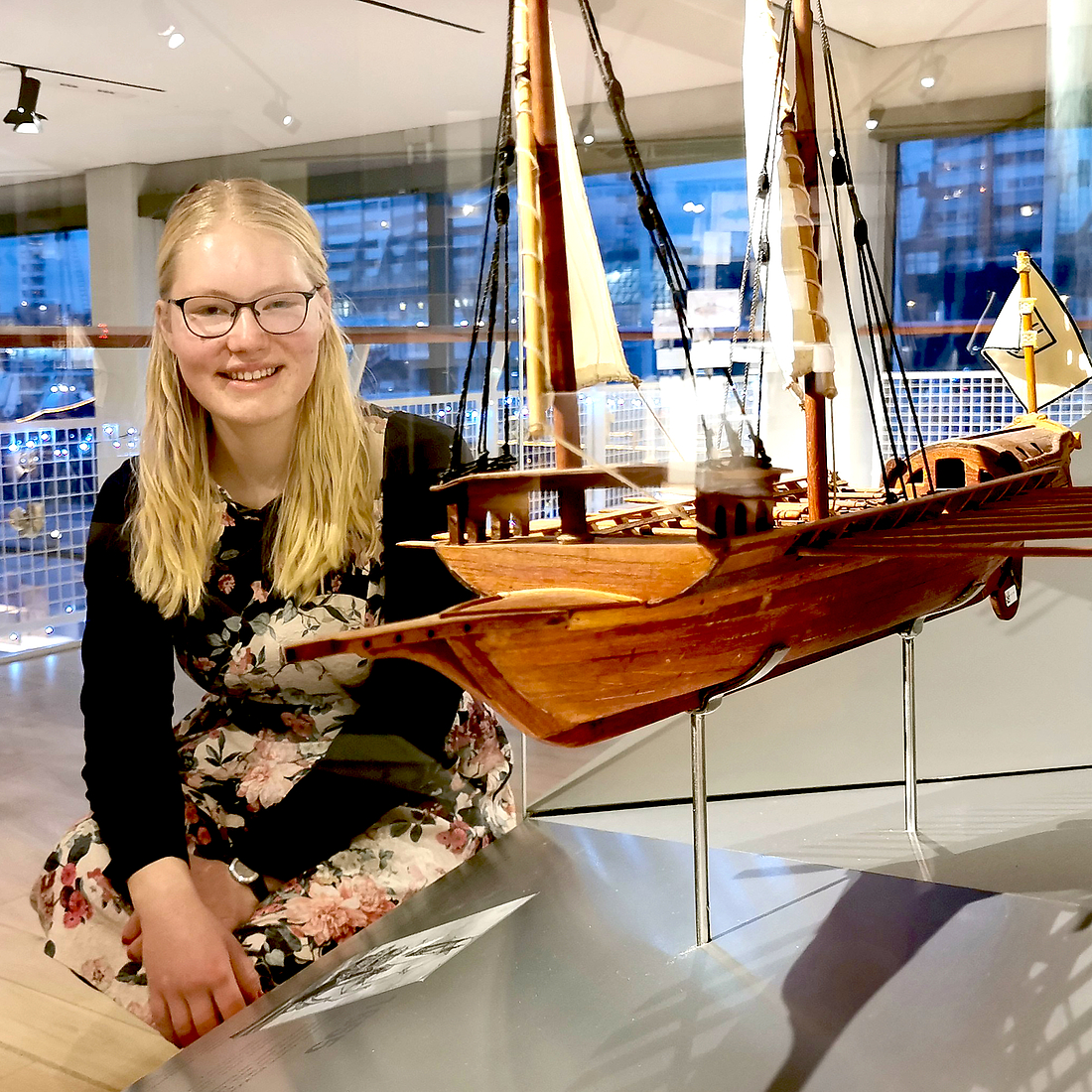FSJ: A given year
She likes ships, Bremerhaven and the sea anyway: Dorothee Honnen can still remember her first visit to the German Maritime Museum (DSM) / Leibniz Institute for Maritime History. Now the Bremerhaven native is permanently at the house for a year, as an FSJ student - hopefully enough time to get to the bottom of the scientific thriller surrounding the discovery of the cog and to find more favorite places in the DSM. The 18-year-old already reveals one in the interview.
Can you remember your first visit to the Maritime Museum?
Yes, it was a long time ago, but I still remember it well. I must have been about seven years old. I stood with my father on the huge photo of Bremerhaven's harbors, which was still on the floor at the time. I also couldn't forget the large sperm whale skeleton in the extension building. Of course, we also looked at the cog, but I did not yet understand the historical value of the wreck. Nevertheless, even then I was fascinated by ships and the visit to the museum was very exciting for me.
You are from Bremerhaven, why did you want to do your FSJ right behind the dike at the DSM and not somewhere else in Germany?
I didn't want to move somewhere else right after graduating from high school, but wanted to stay in Bremerhaven for at least one more year. I'm also not quite sure yet what I want to do professionally. I didn't want to try out something on the off chance, but rather take my time deciding. What attracted me to the FSJ was the opportunity to take a look at real working life. It's a new experience that's very different from school structures. During my search for FSJ positions, I also discovered the one at the DSM. Since I'm thinking about working as a teacher later, the position in the Education and Placement Department is a great fit.
What are your tasks?
Together with my colleagues, I carry out various projects and prepare and follow them up. These include workshops, school projects and guided tours. We always adapt the projects to the school class that comes to us. We also come up with new concepts and think with the teachers about how to work with the students on a certain topic in the museum.
What personal project will you be working on during your FSJ?
I plan to build a functional model of our steam hammer. With the help of this model, I want to make an explanatory video that will clearly show visitors how the steam hammer works. I came up with the idea because many visitors ask about the exact functioning of the steam hammer. The original hammer cannot be moved and therefore cannot be demonstrated. It is therefore difficult for visitors to imagine the exact process. It is not yet clear exactly what the hammer will look like later.
What will happen for you after the FSJ? Will you remain faithful to museum work?
I don't know exactly what I will do after the FSJ. At the moment, I'm thinking about doing an apprenticeship in carpentry and then perhaps continuing my training to become a vocational school teacher. Or I could study interior design. So I'm not staying true to museum work, although it gives me a lot of pleasure and I'm learning a lot.
To whom would you recommend an FSJ at the DSM?
I recommend an FSJ at the DSM, in the Education and Outreach Department, to anyone who enjoys working with children. The person does not have to be interested in shipping in his or her free time. An interest in ships and shipping history does not hurt, of course. In addition, the person should be open-minded and have a desire to work with many people. I think everyone who has the opportunity should do an FSJ. Regardless of whether you already have a plan for the future or not. You experience real everyday working life and definitely get ahead. It's definitely not a wasted year, as some people tried to convince me beforehand.
Do you already have a favorite exhibit that is particularly close to your heart?
Yes, the rat (actually all the animals in the exhibition). Many visitors assume that it was the most annoying animal for the sailors on the cog in the Middle Ages. The opposite is true. It was the most harmless animal. Corn weevils and mussels were much more damaging to the ship and cargo. Overall, I really like the corner where the display case with the rat is located. Here you learn a lot about life aboard Kogge in the Middle Ages.
Which place in the Kogge Hall do you like best and why?
In the Cog Hall, I feel particularly comfortable on the first floor. There, where the timeline describes information about the discovery of the wreck. I find the whole story about the cog exciting and always discover something new. I'm especially interested in conservation because I'm passionate about natural sciences. It has not only been time-consuming and costly, but also innovative.

Dorothee Honnen in front of a model ship at the German Maritime Museum.
Foto: DSM / Annica Müllenberg

